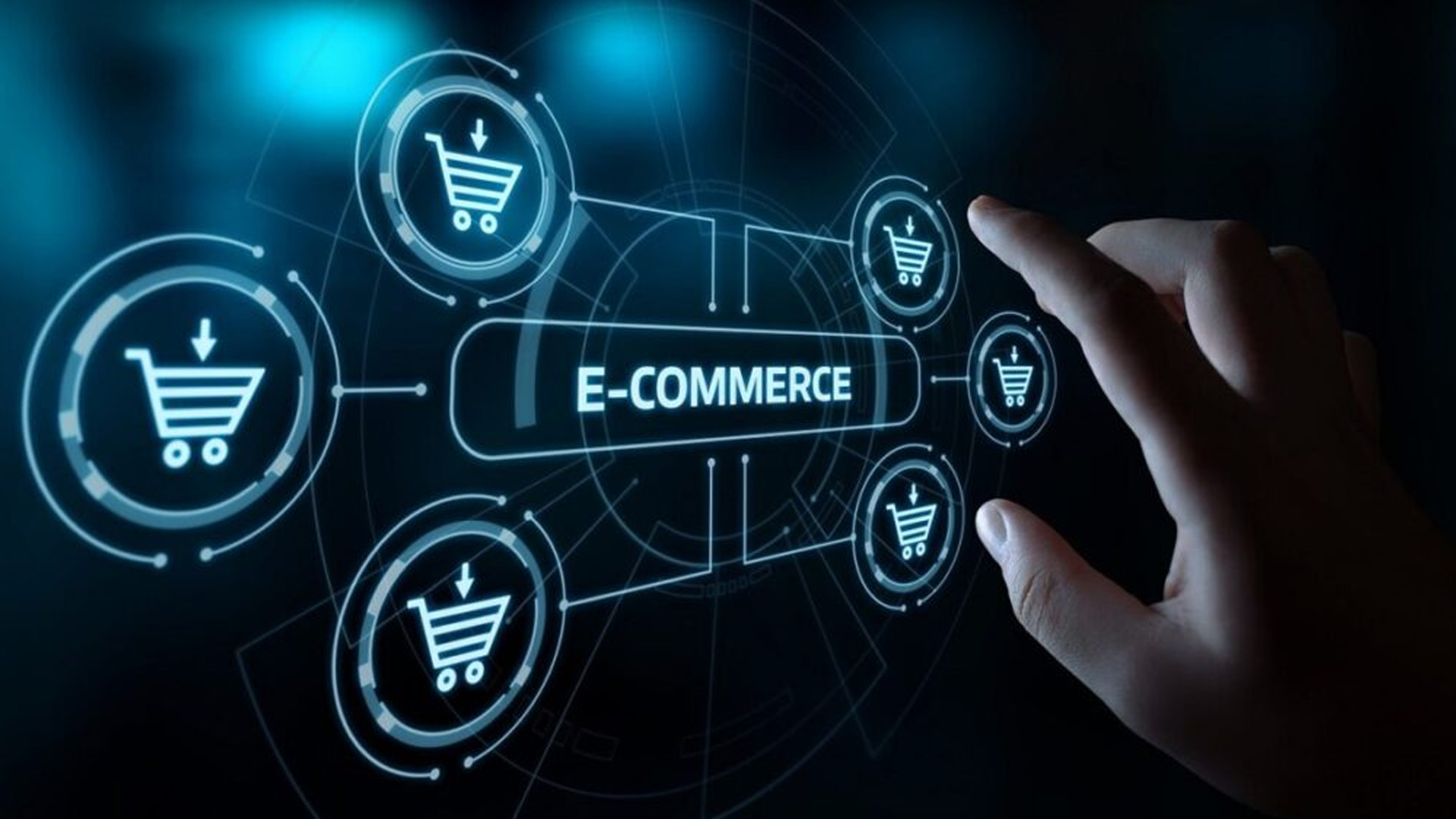Headless Magento Explained: Unlocking Unprecedented Flexibility and Performance for Your E-commerce in 2025
The e-commerce landscape in 2025 is a crucible of innovation. Customers, armed with smartphones and insatiable appetites for instant gratification, demand blazing-fast load times, hyper-personalized experiences, and seamless interactions across every digital touchpoint. Businesses, in turn, are scrambling to keep pace, struggling with the limitations of traditional monolithic platforms that often impede agility and restrict creative freedom.
Enter Headless Commerce, a revolutionary architectural approach that’s reshaping how online businesses are built. And at the forefront of this revolution, leveraging its robust backend capabilities, stands Magento (Adobe Commerce). No longer just a conventional e-commerce platform, Headless Magento is emerging as the strategic choice for enterprises and ambitious brands seeking to unlock unprecedented flexibility, unleash superior performance, and truly future-proof their online presence.
This comprehensive guide will demystify Headless Magento. We’ll explore what it means to go headless, why this architecture is rapidly becoming the standard for leading brands, how it works under the hood, its profound advantages, and the considerations you need to keep in mind before making the leap.
What Exactly is Headless Commerce? The Analogy
To understand headless commerce, let’s first picture a traditional e-commerce platform – often called a “monolith.” In a monolithic setup, the frontend (what your customers see and interact with, like your website’s design, product pages, checkout flow) and the backend (the engine that handles product data, orders, customer information, inventory, and payment processing) are tightly coupled. They are built and deployed as a single, interdependent unit. Any change to the frontend might require adjustments to the backend, and vice-versa, making updates slow and complex.
Now, imagine a headless system. Think of it like this: Your e-commerce backend (powered by Magento) is like a highly efficient, well-organized kitchen. It stores all the ingredients (product data), manages the recipes (business logic for pricing, inventory, orders), and handles the payment terminal.
The frontend is like the restaurant’s dining area – the décor, the tables, the menus. But crucially, it’s detached from the kitchen. Instead of the kitchen dictating the dining area’s design, the dining area (your website, mobile app, smart display, voice assistant) simply sends orders to the kitchen through a standardized “waiter” – the API (Application Programming Interface). The kitchen (Magento backend) processes the order and sends the requested “dish” (data) back to the dining area.
This decoupling of the frontend from the backend is the essence of headless commerce.
Why Go Headless with Magento? The Core Drivers in 2025
The shift to headless isn’t just a technical trend; it’s a strategic imperative driven by evolving customer expectations and business needs:
- Blazing-Fast Performance: In India, where mobile penetration is incredibly high and internet speeds can vary, customers expect instantaneous load times. Every second counts. Headless storefronts, often built with modern JavaScript frameworks, load significantly faster than traditional monolithic sites, directly impacting bounce rates, conversion rates, and SEO.
- Unmatched Flexibility and Creative Freedom: Brands are constantly striving for unique online experiences that reflect their identity. Headless allows designers and frontend developers complete creative control, enabling pixel-perfect custom designs, dynamic content, and unique user journeys without being constrained by the backend’s templating system.
- Omnichannel Imperative: Modern consumers interact with brands across countless touchpoints: websites, mobile apps, social media, in-store kiosks, voice assistants, smart mirrors, and IoT devices. A single Magento backend can now power all these diverse “heads,” ensuring a consistent brand experience and centralized data management across every channel. This is particularly vital for brands targeting the diverse consumer habits across India.
- Agility and Faster Time-to-Market: With decoupled architectures, frontend developers can iterate rapidly, deploy new features, or update designs without needing to touch the backend. This accelerates development cycles, allowing businesses to respond quickly to market trends, run A/B tests, and launch new campaigns with unprecedented speed.
- Enhanced Scalability: The frontend and backend can be scaled independently. A surge in traffic to your website won’t necessarily overload your backend, and vice versa. This elasticity ensures your store remains performant even during peak sales events (like Diwali or festive sales).
- Future-Proofing Your Investment: Technology evolves at a dizzying pace. By decoupling, you future-proof your e-commerce platform. If a new, superior frontend technology emerges five years from now, you can simply swap out your current frontend “head” without rebuilding your entire commerce engine.
- Improved Developer Experience: Frontend developers can use their preferred tools and frameworks (React, Vue.js, Angular, Next.js), leading to higher productivity and access to a broader talent pool.
How Headless Magento Works: The Architecture Unpacked
At its core, a Headless Magento setup involves three key layers:
- The Magento Backend (The Commerce Engine):
- This remains the heart of your e-commerce operation. It manages all the essential commerce functionalities:
- Product Information Management (PIM): Product catalogs, pricing, inventory.
- Order Management System (OMS): Order processing, fulfillment, returns.
- Customer Relationship Management (CRM): Customer accounts, history, loyalty.
- Promotions & Discounts: Rules, coupons, segmentation.
- Payment Gateway Integrations: Secure payment processing.
- All these operations are exposed via APIs.
- This remains the heart of your e-commerce operation. It manages all the essential commerce functionalities:
- The API Layer (The Communication Bridge):
- This is the crucial link between your frontend and backend. Magento provides robust APIs for this communication:
- REST (Representational State Transfer) APIs: The traditional, widely used API style, offering a comprehensive set of endpoints for various e-commerce operations.
- GraphQL APIs: Gaining significant popularity for headless commerce. GraphQL allows the frontend to request exactly the data it needs in a single query, reducing over-fetching or under-fetching of data. This leads to more efficient data transfer and faster load times, especially beneficial for complex product pages or dynamic content.
- This is the crucial link between your frontend and backend. Magento provides robust APIs for this communication:
- The Frontend Layer (The “Head”):
- This is entirely separate from the Magento backend and built using modern web technologies. Popular choices include:
- Modern JavaScript Frameworks: React.js, Vue.js, Angular.
- Server-Side Rendering (SSR) Frameworks: Next.js (for React), Nuxt.js (for Vue.js), which are crucial for SEO and initial page load speed.
- Progressive Web App (PWA) Frameworks:
- Magento PWA Studio: Adobe’s official toolkit specifically designed for building blazing-fast PWAs on top of Magento. It provides pre-built components (like Venia, a reference storefront), developer tools, and best practices.
- Vue Storefront: A popular open-source, vendor-agnostic PWA framework that can connect to Magento and other e-commerce platforms.
- ScandiPWA: A Magento-specific PWA theme that offers a comprehensive headless solution.
- This is entirely separate from the Magento backend and built using modern web technologies. Popular choices include:
The Data Flow: When a user interacts with your headless store:
- The frontend (e.g., your PWA) sends a request to the Magento backend via its REST or GraphQL APIs (e.g., “fetch product details for SKU X”).
- The Magento backend processes the request, retrieves the necessary data from its database, and performs any business logic.
- The backend sends the requested data back to the frontend via the API.
- The frontend receives the data and renders the user interface dynamically, providing a seamless and instant experience.
Unprecedented Flexibility: Deeper Dive
- Complete Creative Control: Break free from templating limitations. Designers have a blank canvas to create bespoke, pixel-perfect user interfaces, custom animations, and unique brand storytelling, resulting in a truly distinctive online presence.
- Technology Agnosticism: You’re not locked into a specific frontend technology. Your team can choose the best framework for their skills and project needs, leading to more efficient development and access to a wider talent pool.
- Omnichannel Reach (Revisited):
- Web: A super-fast PWA or traditional website.
- Mobile Apps: Power native iOS and Android apps with the same backend.
- In-Store Experiences: Connect digital kiosks, smart mirrors, or interactive displays.
- Voice Commerce: Integrate with voice assistants like Alexa or Google Assistant.
- IoT Devices: Enable smart appliances or wearables to interact with your commerce engine. This creates a unified commerce experience, where all channels are synchronized with your Magento backend, providing consistent customer data and inventory.
- Microservices Integration: Headless architecture naturally lends itself to integrating other specialized microservices for search (e.g., Algolia), content (e.g., Contentful), personalization (e.g., Klevu), or payments, creating a “best-of-breed” e-commerce ecosystem.
Unlocking Superior Performance: Deeper Dive
- Blazing-Fast Load Times: Frontend frameworks are built for speed. By rendering content on the client side (or with SSR), they significantly reduce the time-to-first-byte and overall page load times. This is vital for customer satisfaction and directly impacts your Google SEO rankings.
- Improved Core Web Vitals: Headless setups inherently excel at achieving high scores for Google’s Core Web Vitals (Largest Contentful Paint, First Input Delay, Cumulative Layout Shift), which are critical ranking factors for mobile-first indexing.
- Efficient Caching: Frontend frameworks can implement aggressive caching strategies, storing more data client-side and reducing the number of requests to the backend, leading to an even snappier user experience.
- Independent Scaling: Your frontend and backend can scale independently. If your marketing campaign drives a massive surge in website traffic, you can scale your frontend servers without necessarily needing to scale your entire Magento backend. This optimizes resource allocation and cost.
- True App-like Experiences with PWAs:
- Offline Capabilities: PWAs can cache content, allowing users to browse products even when they have no internet connection (e.g., in remote areas or during transit).
- Push Notifications: Re-engage users directly on their devices with personalized alerts for sales, abandoned carts, or new arrivals.
- “Add to Home Screen” Prompts: Encourage users to “install” your PWA like a native app, increasing direct access and repeat visits.
- Smooth Navigation & Animations: Modern frontend frameworks provide fluid transitions and responsive interactions, mimicking the feel of a native mobile application.
When to Consider Headless Magento for Your Business
While incredibly powerful, headless commerce isn’t for every business. It’s a strategic investment that yields significant returns for specific scenarios:
- You Have Complex E-commerce Needs: If your business requires a highly customized user experience, unique checkout flows, or integrates with numerous third-party systems that traditional themes struggle with.
- Performance is Paramount: If every millisecond of page load time directly translates to significant revenue gains or losses (e.g., high-traffic flash sales sites, competitive retail).
- You’re Implementing an Omnichannel Strategy: If you need to deliver a consistent brand experience across multiple touchpoints beyond just a standard website (e.g., native mobile apps, in-store digital screens, IoT).
- You are a Large-Scale B2C or B2B Operation: Businesses with extensive product catalogs, high transaction volumes, or complex customer segmentation benefit immensely from the scalability and flexibility.
- You Have Existing Native Mobile Apps: If you already have iOS and Android apps, headless allows you to unify their backend logic with your web store, streamlining data and management.
- You Have a Strong Frontend Development Team: Headless requires expertise in modern JavaScript frameworks and API integration.
- You Operate in a Highly Competitive Market: Headless provides the cutting-edge UX and performance needed to stand out and capture market share.
- You are in India: Given the country’s mobile-first user base, varying internet connectivity, and demand for personalized digital experiences, headless Magento with a strong PWA frontend is an ideal solution for Indian businesses looking for a competitive edge.
Challenges & Considerations
While the benefits are immense, it’s crucial to be aware of the challenges:
- Increased Complexity: A headless setup involves more moving parts. This means more initial development effort, more components to manage, and potentially more complex debugging.
- Higher Initial Cost: Building a custom frontend from scratch can be more expensive upfront than implementing a pre-built theme. However, this is often offset by long-term flexibility and performance gains.
- SEO Nuances: While PWAs are SEO-friendly, proper implementation of Server-Side Rendering (SSR) or Static Site Generation (SSG) is crucial to ensure search engine crawlers can index your content effectively.
- Extension Compatibility: Not all existing Magento extensions are “headless-ready.” Some may require custom API development or alternative solutions to integrate with a decoupled frontend.
- Deployment & Management: Managing separate frontend and backend deployments, along with API gateways and potentially multiple hosting environments, requires more sophisticated DevOps practices.
Conclusion: Your Gateway to Future-Proof E-commerce
In 2025, Headless Magento is more than just a buzzword; it’s a strategic architectural shift that empowers businesses to deliver the next generation of e-commerce experiences. By decoupling the frontend from the powerful Magento backend, you unlock a realm of unprecedented flexibility in design, achieve lightning-fast performance, and enable a truly unified omnichannel presence.
While it demands a higher initial investment in development and a more sophisticated technical approach, the long-term benefits in terms of user experience, agility, scalability, and future-proofing your e-commerce investment are invaluable. If your business is ready to move beyond the limitations of traditional e-commerce and truly dominate the digital landscape, embracing Headless Magento could be the most strategic decision you make this year. It’s time to unleash the full potential of your online store and build a platform that’s ready for anything the future of commerce throws at it.




